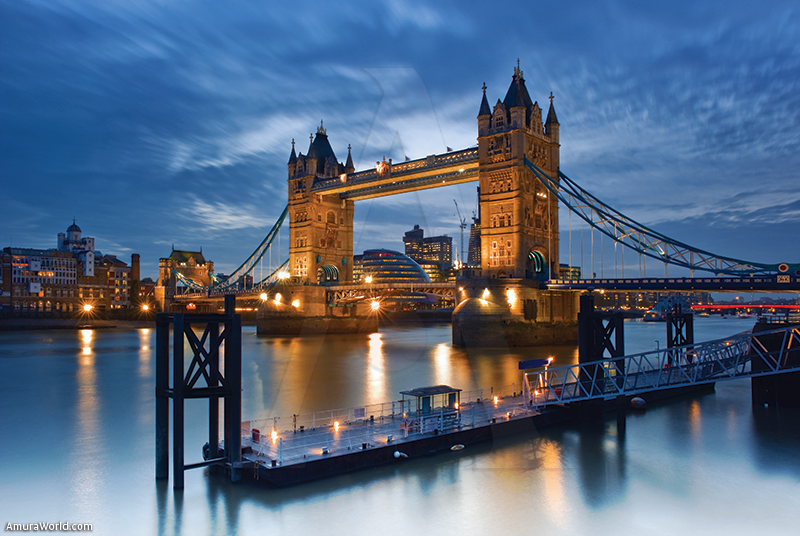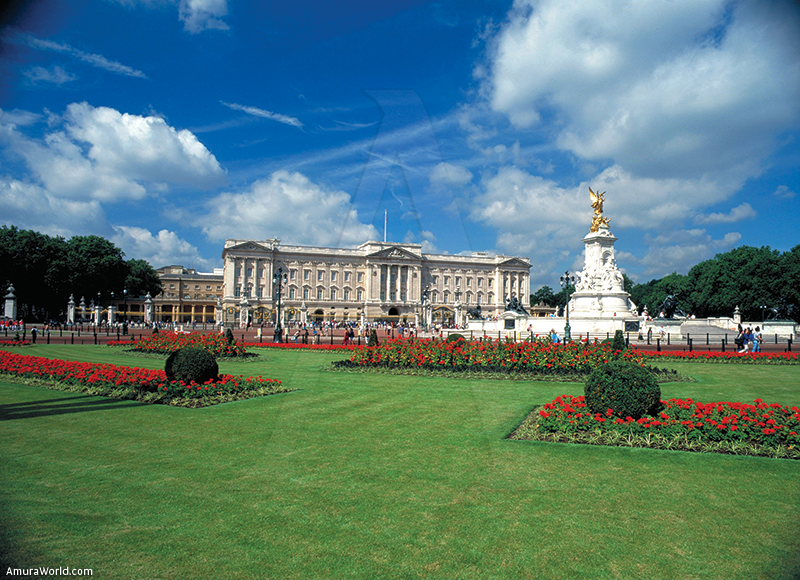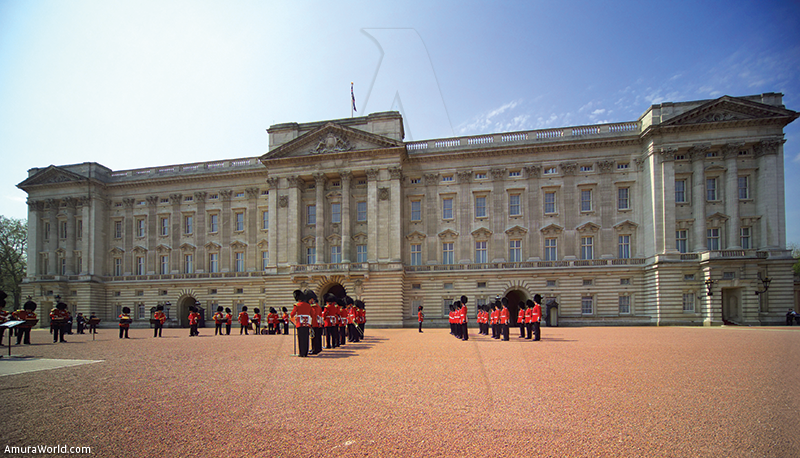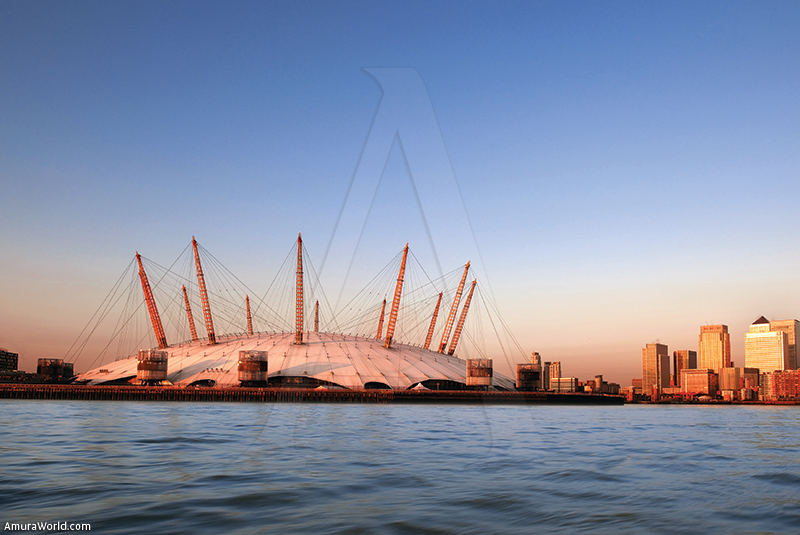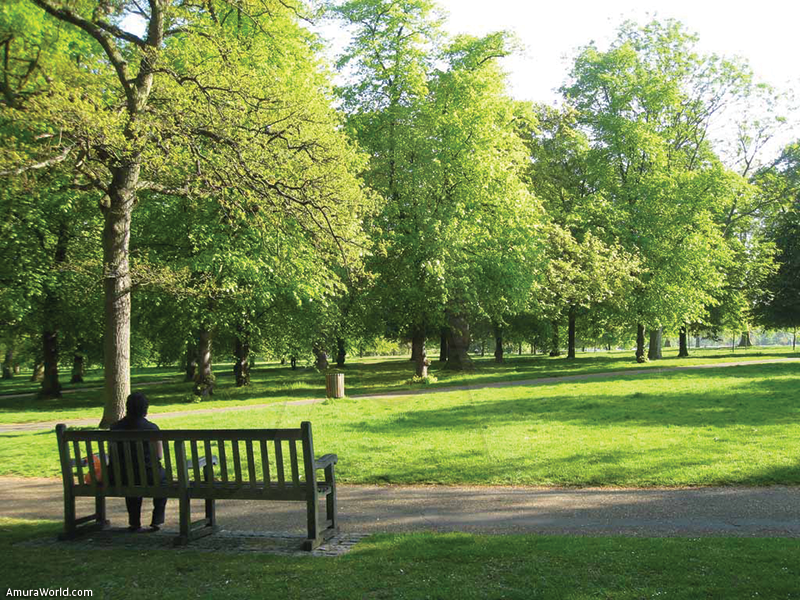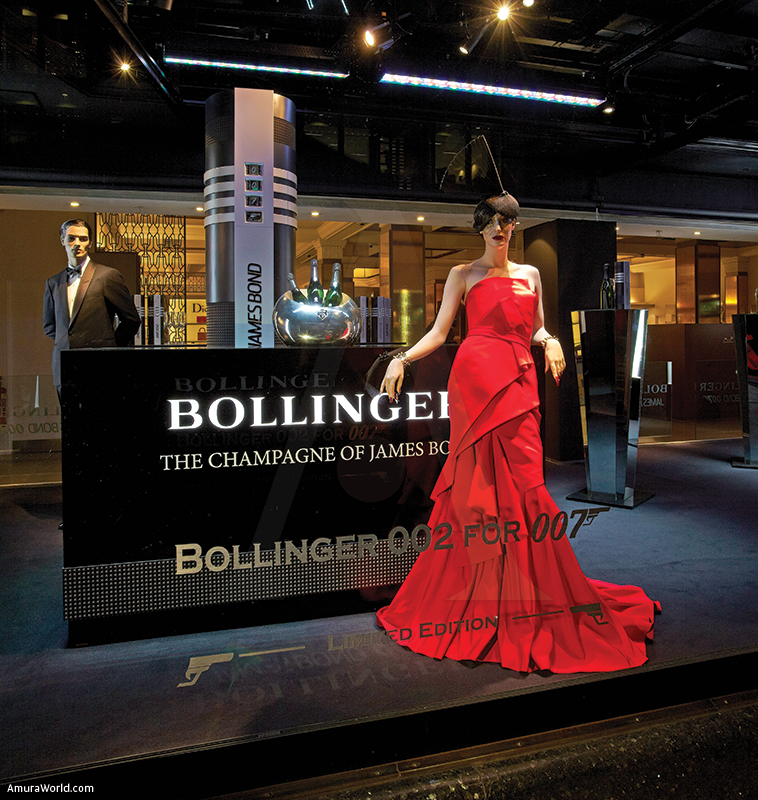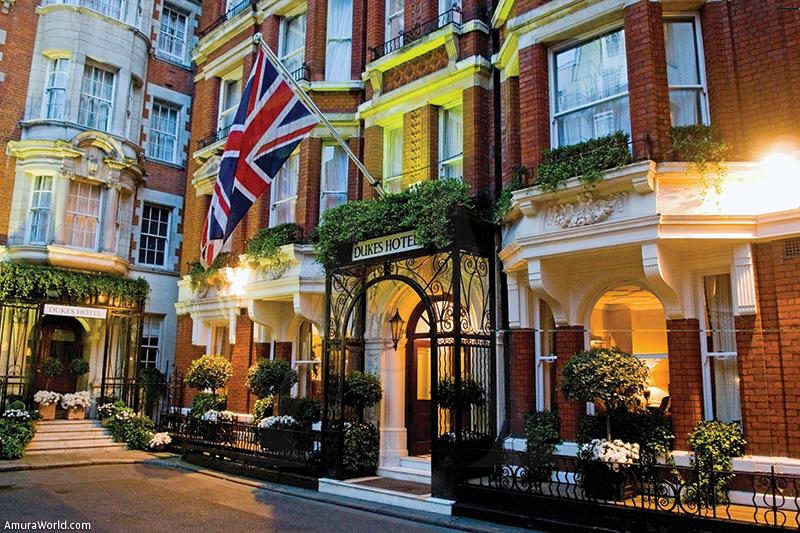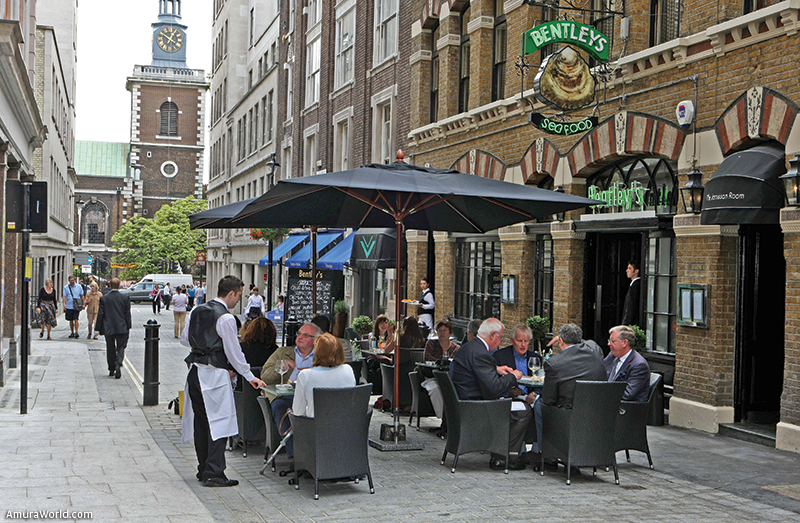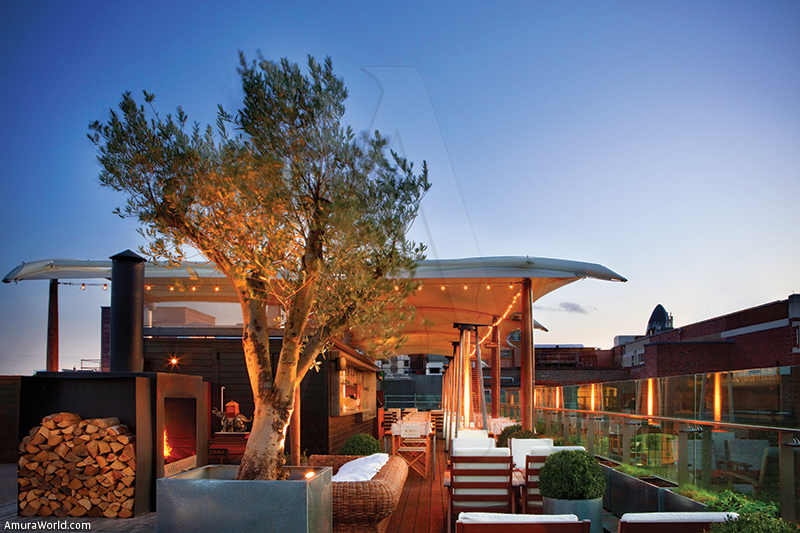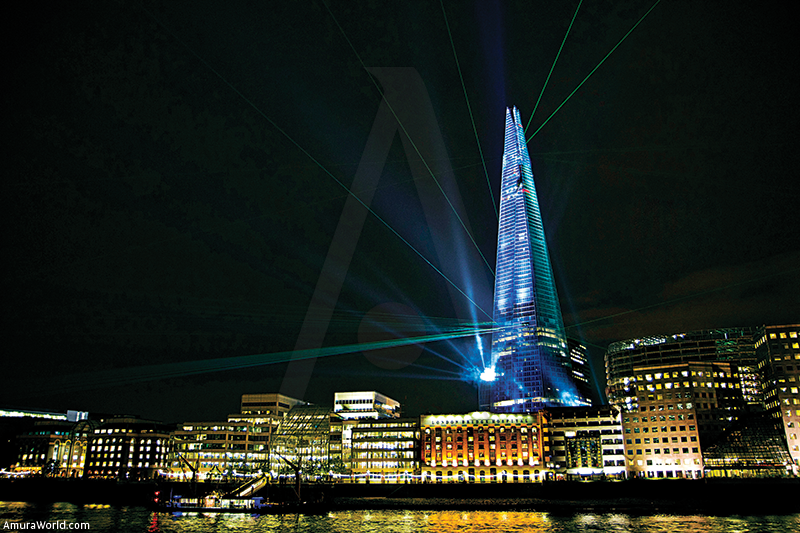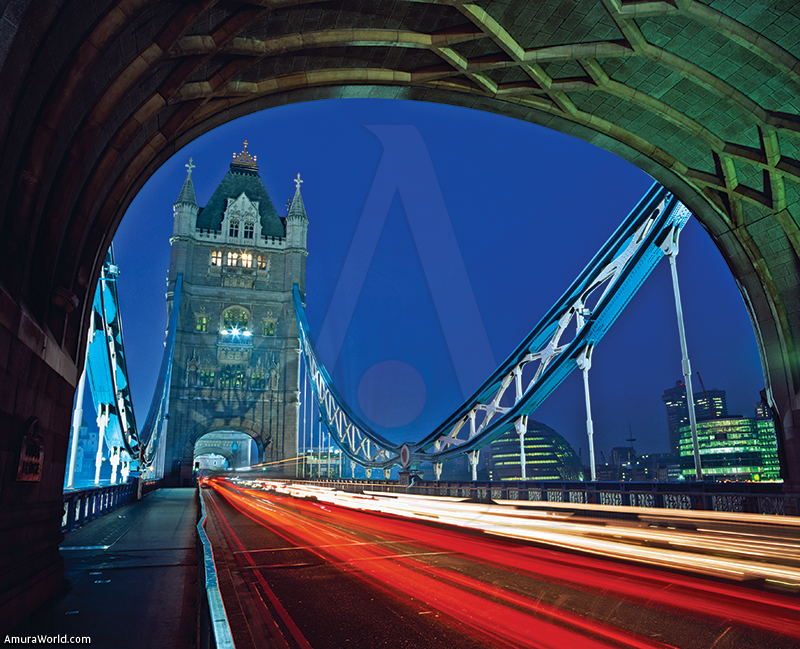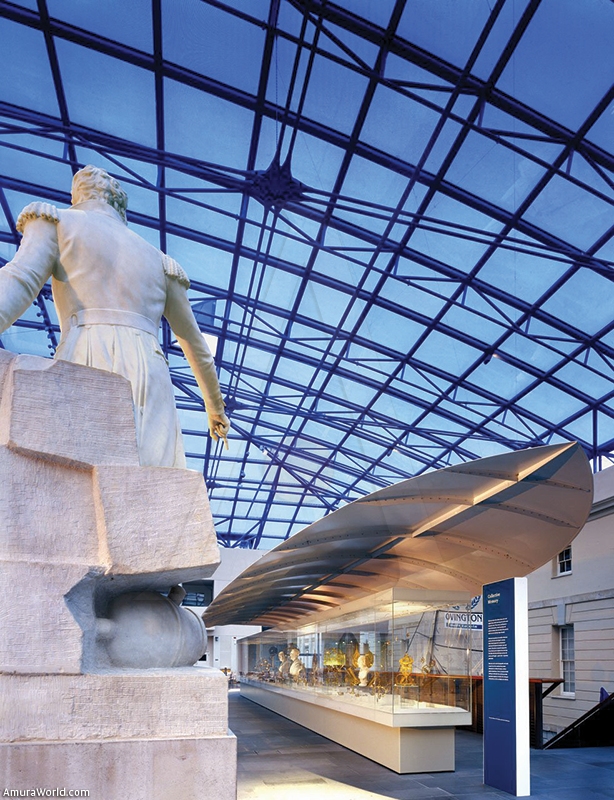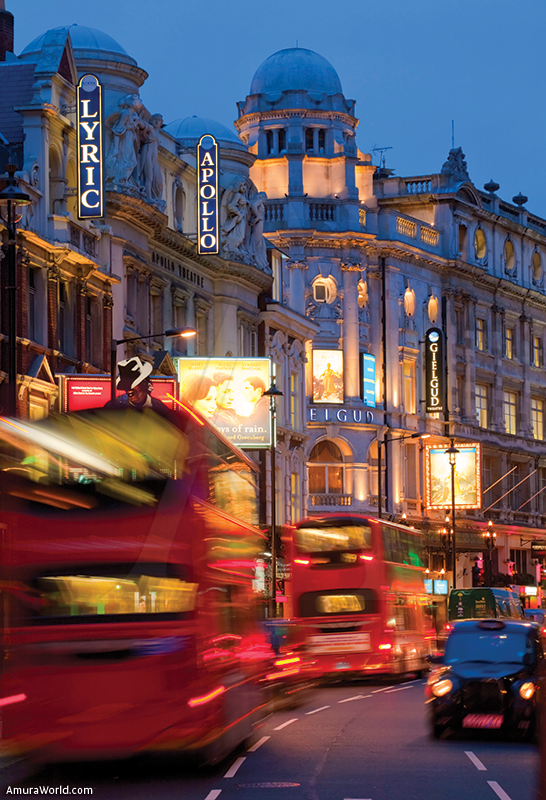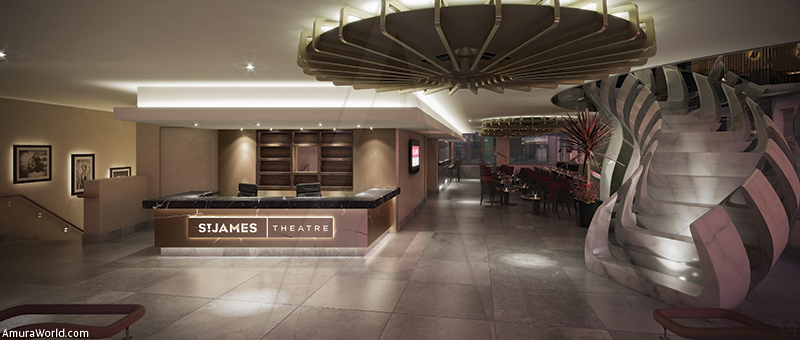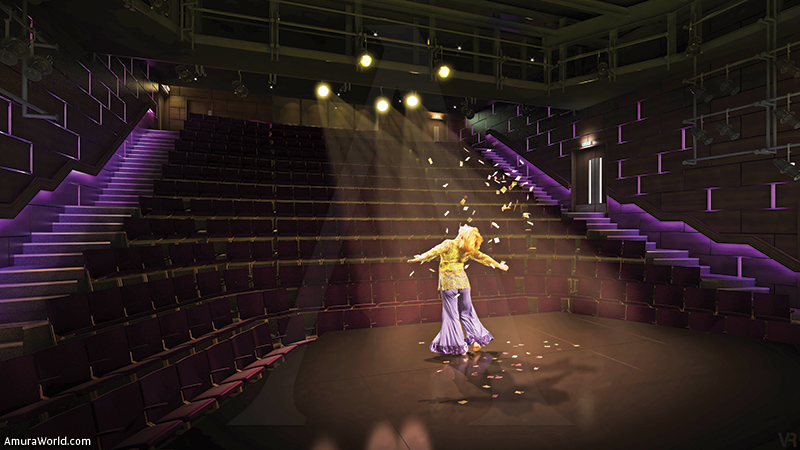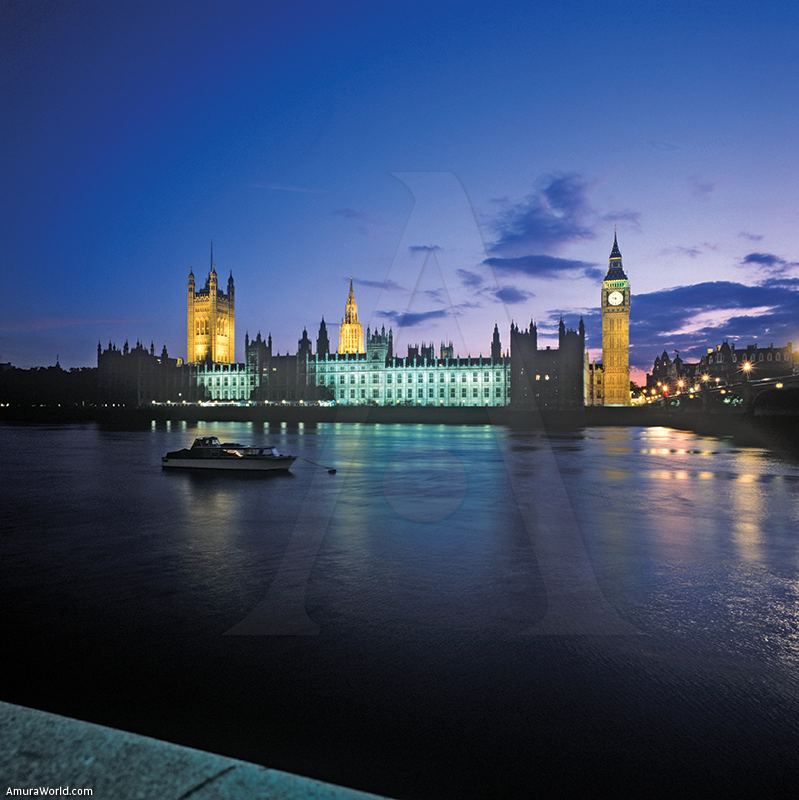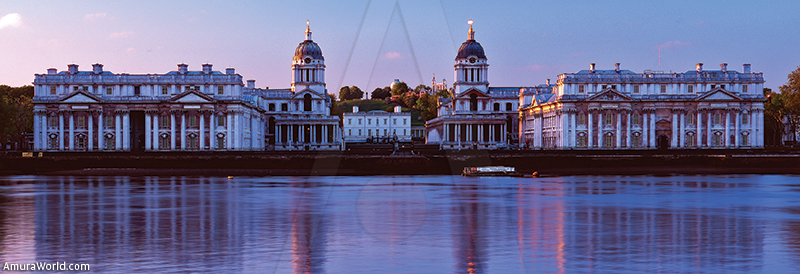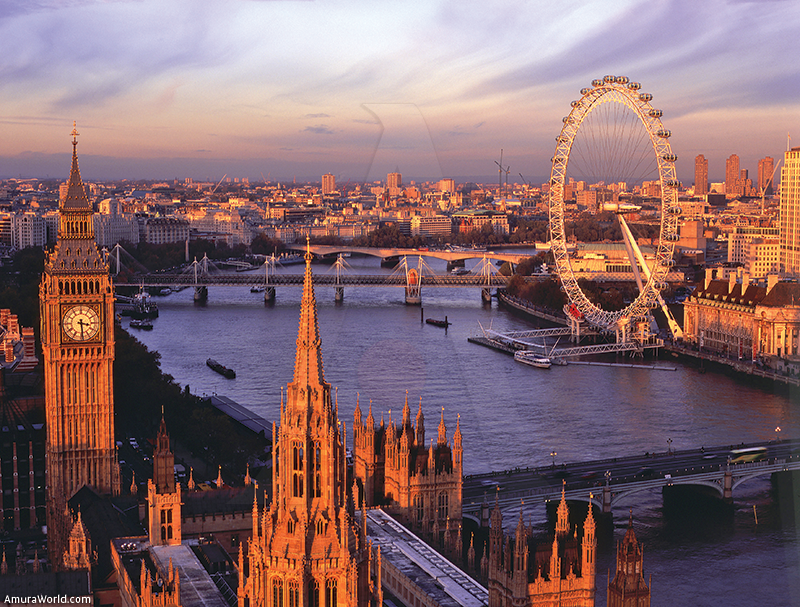One of Britain’s Prides
AMURA is proud to have in this issue the kind assistance of the British Ambassador in Mexico, Judith Macgregor. The diplomat generously granted us an interview at the British Embassy in Mexico City.
It was not surprising her vast knowledge of London, which was revealed as sensitive and alive. The unexpected fact was, the fluidity of her account during a meticulous tour, guiding us with detailed descriptions through her memories. She gave us much more than data; she aroused our interest of the endless wonders that the legendary capital of the UK keeps, which we discovered from an emotional perspective.
I think visitors should definitely spend five nights in London. I’m sure it would be a very good idea indeed at any time of year, because the seasons are beautiful in the UK. You have a strong spring and a sharp fall, a light winter and a pleasant, usually very pleasant summer.
London has many things to consider. You can use the time to do many different things. For example, you can dedicate a day to London Royal. We have Buckingham Palace, the Queen’s Palace, which has a superb art gallery, the Art Gallery of Buckingham Palace, with the Queen’s personal collection, formed with gorgeous Italian, European, German and English art of all ages.
Buckingham Palace was built in 1703 and has become since, the seat of royal powers. It occupies a land of nearly 8 acres (77,000 km2) and its neoclassical architectural style is from the Belle Époque.
The Royal Gallery safeguards the Royal Collection, property of the British Crown. It cannot be divided or sold. It includes several eras, schools and countries. Medieval, Renaissance, French, Flemish, Monet, Da Vinci, Michelangelo, Rubens and Rembrandt; and a large presence of British painters like Hogarth, Lely, West and impressive temporary collections as “The Northern Renaissance : from Dürer to Holbein “. On display, at the Queen’s Gallery from November 2012 through mid-April 2013. Ambassador Macgregor continues touring her memoirs of the capital of the United Kingdom:
Walking in the area of Buckingham Palace, close to some of London’s great parks like the Royal Parks, which are under the authority of the Queen, is an excellent walk and scenery to enjoy as we enter and exit the galleries that are in the historic buildings.
Or you can hop on a boat and go down the Thames, and then you certainly will have a perception of Royal Britain. You will be sailing from Westminster Bridge, the Houses of Parliament and Westminster Cathedral, where the kings and queens are buried. Pass by the Meath Park monument to reach the Tower of London with its drawbridge, which represents the extraordinary story of royal power through the ages. The river is not very long, but rather historical, because you see several historical points going through it.
You can also appreciate modern images of young London. If we go a little further than the Tower of London, you will find the O2 Centre in the Millennium Dome, the Olympic Park and the Canary Walk, full of different buildings, art galleries, cafes, shops and nice people walking. The Olympic Park is open to visitors with many places they can enjoy and spend time at.
In order to affect the least possible the historical and ecological environment, and also take advantage of the buildings, all the facilities that were built for the 2012 London Olympics, were conceived as elements that would transcend its purely sporting purpose, to be used later on, thanks to strategic planning for the future, they will be used to benefit the community for a long time.
Thus, through small demolitions to the Olympic Park, it is now an auditorium with a capacity for 25,000 spectators, as opposed as the original 80,000. The Velodrome is a circuit that accommodates 2,500 attendees, instead of 17,500 during the Games. At the Olympic Village where 17,000 athletes stayed, is now a housing complex for 4,000 families, and the Olympic Park is now a wonderful green area over London, a rival in beauty and size with the legendary Hyde Park .
It is a vibrant part of London that has been restored, and is full of life. You can go to Spitalfields and Shoreditch, which are areas where people produced textiles and had small industries. Continuing along the shore are some of the most innovative and stylish restaurants in London, but with good food. Great markets, ethnic markets, you can wander the cosmopolitan ethnic markets in Brick Lane. Last summer I was in Brick Lane, in a “Mex Fest”. It was a festival in the Mexican area, in Shoreditch, literally on Brick Lane, there were many businesses selling prepared food and many Mexicans attentive, ready to eat.
There are very colorful and interesting markets where you can find all kinds of food. Spitalfields is a new shopping area in the former textile area. And if you go back a little from East to the center, there are great markets like Burroughs Market, famous worldwide for its variety of food and vegetables. Almost like a market in Mexico City, but different, because there is a large Asian population and an obvious Asian context.
You can do the route of the old London British Royalty or the modern London, and you can go by boat, bicycle, subway or train, because London now, has a very different transport system ... Or you can shop. We have some stores that obviously you must visit. Harrods, which is like a country in itself, it is huge. We have Harvey Nickols, and we are already in Kensington, where there are great places to see and shop.
You can go around Kensington and go to Night Brick where many of the avant-garde designers are making their appearance in London. Like Alexander McQueen Enterprises who created Kate Middleton’s wedding dress; Countess of Cambridge, Victoria Beckham, who just opened a store in Square Flaws in the Kensington area, and others, among the world’s top designers.
Pretty close from there, men can be tailored in designers’ suits following the tradition of using high quality materials. Throughout the area near Night Brick, Kensington and Piccadilly you can live the old tradition of handmade tailored shoes, handmade accessories and men’s shirts.
In the German Street, which remains the traditional tailoring excellence area, you will find Fortum and Mason; they will soon be formally in Mexico. They have extraordinary teas, coffees, biscuits and confectioneries that are part of the traditional “British Cuisine”.
Then, we can go back to Covent Garden, where the most advanced contemporary fashion in the range of small shops is. It’s about a mile. Unconventional fashion, brands for “high-end” tastes, like Burberry, Stella McCartney, the best, all kinds of accessories. The most prestigious brands can be found in Oxford, Spencer and Norman Streets; they have a wide variety of fashionable clothing at competitive prices, and a mid-level fashion that is quite interesting.
So you can leave Harrolds and find something more stylish, have a drink, rejoice with the sights and go towards Covent Garden, which also has a flower market, there are enormous flower markets everywhere, but this has been the traditional flower market in London. It is also possible to see people showing their talent to the open public. They sing, they dance, ... there is a large variety. I would say the main thing about London is variety. Perhaps it is the most cosmopolitan city in the world, but still has a personality that blends the old with the modern. It is like the Old London is there, under the bridges, in old cathedrals, in that entire infrastructure. But the London of today, has more room for people to walk, to make representations and a variety of markets of many types. Before going to London, you should really use the internet, visit the pages of ‘visitlondon.com’ or ‘visitbritain.com’. There are so many tours that can be taken!
It provides a lot for people to walk, but there is very good public transportation and bicycles as the” Eco-Bikes “in Mexico City, which is very convenient because you can move from one environment to another. You can go suddenly to modernity, or be in a purely traditional British place and unexpectedly in a very cosmopolitan British-Asian, British-African, including British-Latin American area, in the sense that you could enter “La Lupita” very Mexican! Anyway, shopping is fantastic, I think. Designers, High Street, and high fashion are always a short distance from each other. It is not necessary to travel miles and miles.
Among the restaurants, I like to go ... one is the River Café. Of course, it’s by the river, and it’s not just a “coffee shop”. It is a beautiful restaurant serving predominantly Italian. Ruth Rogers, wife of Richard Rogers the founder, has created a wonderful ambiance that is great to go to. There is also Gordon Ramsey Restaurant in Chelsea, which is also a superb place.
I like restaurants with people, with activity, where you can eat great prepared dishes. They can be very flexible for my particular taste. There is very traditional food, oriental restaurants, if you go to Notting Hill or Chinatown in Soho. There are superb restaurants and Italian grocery stores. There are some new places to which I have not been to, as the “Salesman”, Portuguese, experimental style, on the east side of London. Ultimately, any of the good hotels have excellent ‘cuisine’. “
Ambassador Macgregor said that as she does not stay in hotels when traveling to London, she has no experience in the subject; but she knows their restaurants, as she said, a level of excellence is maintained in the best hotels in the city.
The Rubins, at The Palace Hotel, behind Buckingham Palace, which is the epitome of traditional. There are beautiful hotels in Park Lane, like the Duchess Hotel, very traditional and with a wonderful view of the Royal Park, and I think we need to mention The Boundary Hotel, from a hotel chain, built on what was a craft industrial factory which was completely renovated to a standard really, really high.
Another area where people should go is the London Bridge. We know that the Shard is being built or is already-finished. It is the tallest building in Europe. I think it is a very distinctive building, tall with a tip shaped top. It reflects light, when we see the sunset over the Thames.
The London Bridge is full of history. You can visit with a group and tour the birth and life of writer Charles Dickens. Many of the nineteenth-century medieval buildings still exist, just behind and away from the main arteries. There are a lot of interesting restaurants and small hotels along the river, leading to the heart of London.
An interesting thing is that all our museums are free, you don’t pay to visit them. You might pay to attend a special exhibition, but many exhibits are free. There Is the British Museum, where we have objects and artifacts from all the major cultures of the world. We have the Victoria and Albert Museum, which has the largest collections of fashion and decorative crafts in the world. There is the Museum of Science, if visitors have young children they should visit, it is almost 100% interactive, so from the moment you walk through the door, you’re pulling, pushing and doing things. It is next to the Museum of Natural History, which possibly has the largest collection of dinosaurs in the world. And all these British museums are the best in terms of interest for visitors, they are multilingual, interactive and families with small children go. They are well organized and near Harrods.
A peculiar feature of the UK is its tendency to preserve its history, its traditions, which allows us to know in detail the events and cultural events over time. In England, but especially in London, and especially in the Royal area, it is easy to appreciate the works of the master painters from centuries ago, pieces that have been given a place in world history and the many museums in London have saved so these geniuses can revive before the amazed eyes of the visitors. Besides those dedicated to art, there are others for several subjects.
It’s a great family atmosphere and there are many, there are hundreds of specialized museums. We have Madam Tussauds Arts, Crafts & Films, where you can go see the famous wax pieces. I think that is the best wax museum in the world, right near the former home of Sherlock Holmes in Baker Street, which is also a museum. And the Museum of London has all the characters of the sites where Sherlock Holmes operated. I mean, it really is a magnificent place, it takes time, those who will go, will be surprised by the amount of choices of things to do and see. I think that may be among the richest in the world today. There has been some investing, there are a lot of famous people who lived or, in a fictional manner, operated in London. The drama is so great. The real history, modern history! And then there is the truth, the young, irreverent London.
Or we can take a tour using a bicycle as transportation, that is very important. Or you can take a traditional taxi, classic black, which will take you anywhere you like. And there are taxis that have been adapted for people with disabilities really we need more, they are not the majority. We have given a big boost to the manufacture of boats, trains, subways, taxis and trucks, during the Olympics, they are much more user-friendly for people in wheelchairs or walking on crutches, or whatever you like.
In London there are different types of taxis. Some are traditional, known as “Hackney carriages”, which can be taken in the street without prior reservation, or with it through a “taxisite”. The “Minicabs” must be hired in advance, they cannot be boarded in the street. To be a taxi driver in London, applicants must pass a difficult exam for passenger service and expertise. There is a preparation course that can take up to four years, and of course there are multilingual drivers.
It takes a lot to learn. It’s called “The Knowledge” and is a test that includes knowing where to go anywhere within the central London area. I mean, London is like Mexico City: it has a very large population, so you could not possibly know all the neighborhoods, all the suburbs. But within a certain perimeter of central London, a taxi driver has to see how to get close to the destination, otherwise he cannot proceed even with a GPS system.
The Royal Guard, tea at 5, the aristocracy and even the pronunciation of their language have brought fame to the British people to be “phlegmatic”. However one can appreciate the lucid while acute humor of comedians in the UK. The contrast raises the question: are they phlegmatic or humorous?
I find this interesting. British are phlegmatic in the sense that, perhaps historically, culturally, is not used to panic, they are calm. They value people who are calm, who are orderly, so people adapt, in fact, Mexicans adapt there.
People form a line, they don’t mind waiting, but at the same time, they can be very irreverent and critical. Some of the cartoons we see in newspapers are very, very sharp, very direct, there is no mercy with public figures ... But society tends to be very respectful of the Queen.
Generally, they believe that politicians are democratically elected by the people and therefore must respond to the people who can make fun of them, satirize. It has been a long tradition in Britain since the eighteenth century, the political satire, and mocking political leaders. And we have not spoken, but obviously one of the emotions at the cultural level is the Fiesta. In London we can go to the games, which are parties to the best ... Many cannot get booked on the same day. Always, as a precaution, try to book as soon as you arrive in London. But if it is a national holiday, we have big parties with presentations almost every day, morning and afternoon.
They are in the western part of London, which is a large area that marks the center. There are many parties: cutting edge, traditional, Royal Opera House Theatre, the Coliseum, Sadler’s Wells Theatre, ... there is always something going on. And as I said, if a visitor comes suddenly to London, he has a good chance to get into the theater or he can get in line at the box office, because the audience is always very dynamic, they may vacate seats. That is what I do when I return to London, I try every day to see if there are seats and often I get lucky.
In the context of this buoyant cultural history, adorned with transcendent achievements, with military, scientific, literary and social contributions, it is difficult to choose the greatest impact the UK has had on the world.
It may have to be the English language, because it has increasingly become a language for international communication and a passport to prosperity and global commerce transactions. And I think with the language came along extensive knowledge. The dominance of the English language is not necessarily created by us, but is a platform that gave to English music, Pop stars were followed in many countries where not always they spoke another language, but the public spoke enough English to understand the music and lyrics.
Mexico is a very interesting example, people here do not always know much about England, but they know about the Beatles and know the lyrics of the Beatles, they know the Beatles. In Mexico you can find grandmothers and granddaughters singing the Beatles, right? That’s very interesting and quite unique in Mexico, in fact.
Also, it crosses age ranges, is wonderful.
So I think that the main contribution would be the English language and English literature.
But I think the other would be, perhaps, the Carta Magna, it has taken us many, many hundreds of years to develop. It was made in King John times, in the 12th century. And it was the Barons who said “We want rights,” and the King said, “Well, OK, here are your rights but I want your loyalty.” This is a basic statement of principles made by the people. And over time those rights gradually, not without difficulty, became law. And those laws were implemented and respected and the term “rule of law” is commonly linked to the Carta Magna as the first initiative by a people to their ruler.
And I think there is a wonderful irony in the UK; we do not have a written constitution, but we live with the rules written in the law, and I think that is something that our culture, our work and our relationships have impacted not only the countries in which we have our Empire and our colonies, which became then independent but retain the system of government and respect for the law, but also more widely. So you can follow the trail going to Great Britain and the Parliament, and seeing some of the original documents.
Text: Embajadora de la Gran Bretaña en México ± Photo: Craig Easton / James McCormick

